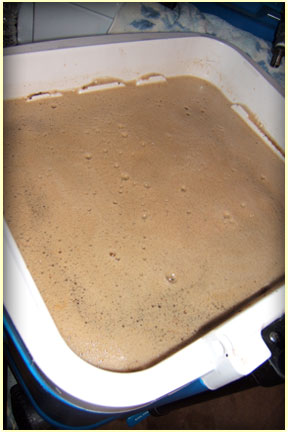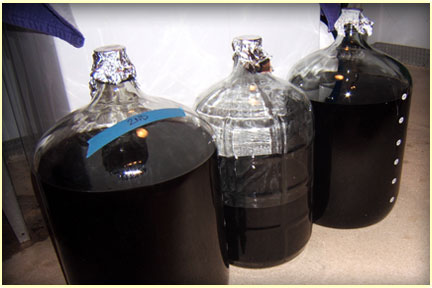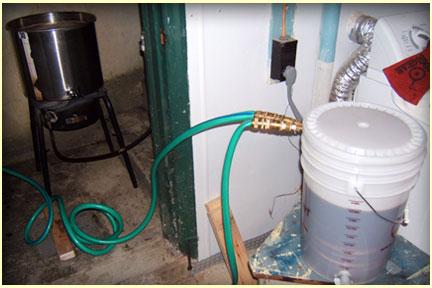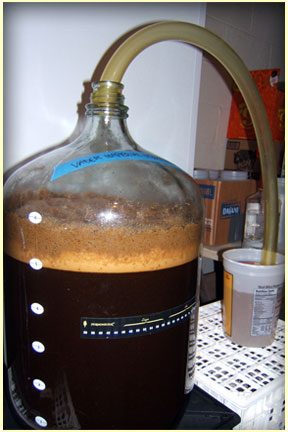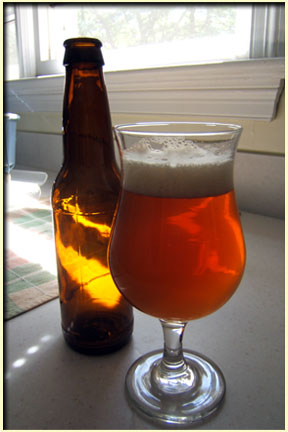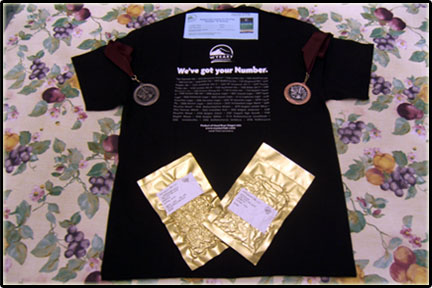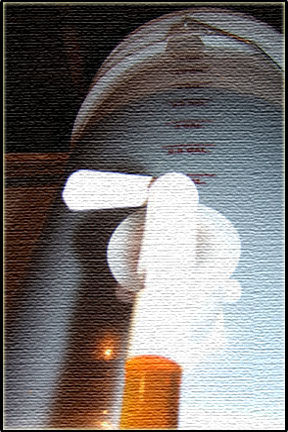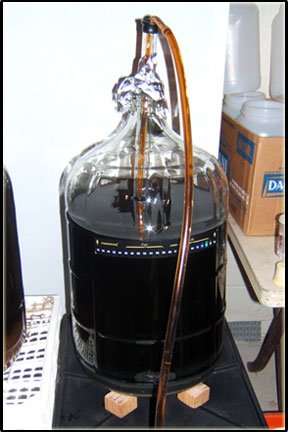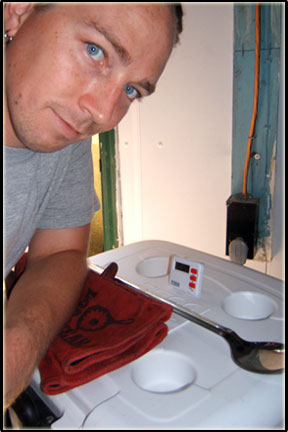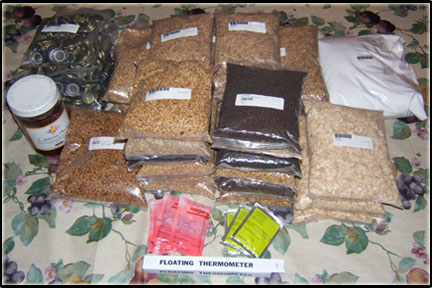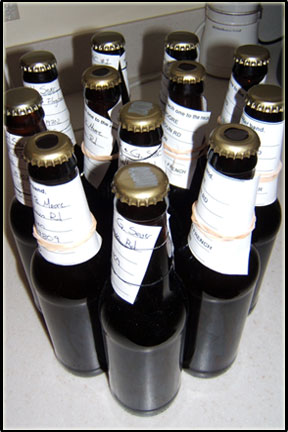Vader
Friday, October 5th, 2007Well, it’s a little dated material, but also some pretty cool homebrew stuff on the Fool Circle front. Last week I brewed my first Imperial Stout since the Enigma fiasco. A did a couple things unorthodox, but overall I think we’re going to be looking at a fine beer here.
Almost brimming 15 gallon mash-tun
Last Wednesday, September 26th, I mashed in and collected the wort for the kettle. And last Thursday, September 27th, I boiled and collected the wort for the fermenter. I had never done a brew day over two days, but I was determined to brew an Imperial Stout (IS) by the end of September (not really sure why) and I had basically run out of weekends. Plus, I wanted to see how good or bad a week-night brew day session would be. Of course I chose to do it with an IS which is a much more involved process than a regular beer. And just to keep things interesting, I also decided sort of on the fly to try and run-off a “small beer” from the left over sugars in the grains. So essentially I wound up with the potential for two beers to come from one mash, a high gravity Imperial Stout and a low gravity “small beer” or “table beer”.
Collected wort from the mash: 6 gallons for the “small beer” and approximately 8 gallons for the Imperial Stout
After the grains were mashed in, all the water heated, and the mash sparged (twice) I had collected about 14 gallons of wort total. I collected the wort in my kettle then transfered it into sanitized carboys over night. One of my biggest concerns was that there would be some sort of thermal-shock problem with the glass of the carboys considering I was putting like 15o degree liquid into them. Fortunately (as far as I can tell) there was no major stress and the glass held up fine.
The following evening I was originally going to start my boil (135 minutes) with the Imperial Stout with the mind frame of if things ran too late I could always bag doing the small beer. Instead I switched things around and boiled (75 minutes) the “small beer” first thus forcing myself to complete both beers in one night. As the “small beer” was beginning to come to the end of its boil time and I was anticipating starting the Imperial Stout I came to the sudden conclusion that I was about to run into a problem. That problem was I had anticipated beginning the boil for the IS while the “small beer” was cooling, but I had forgotten that I only have one kettle thus eliminating the possibility of doing both at the same time and consequently possibly adding between 30-45 minutes to my night. I suddenly came up with the idea that I didn’t need a second kettle just a second vessel to collect the wort from the small beer and be able to use my wort chiller at the same time. I quickly sanitized my bottling bucket, measured the wort chiller in the bucket (great fit), and waited for the time to come.
Bringing the Imperial Stout up to boil while simultaneously cooling the “small beer” down from boiling
I began to cool the “small beer” for about 5 minutes in the kettle initially dropping its temperature to below 150 then transfered it to the bucket. I then dumped the two carboys of liquid love for the IS into the kettle and got ready for a long boil. I think the total time the IS was in the kettle from bringing it up to temperature, boiling, and cooling was about 210 minutes, like three and a half hours (forever)! By the time I had things all cleaned up and pitching yeast it was a little after 1:30AM and I was whooped. For yeast I used the same for both beers, a 3rd generation yeast cake of WLP001. I was concerned about it’s viability even though I made a starter and it took off fine, but there didn’t seem to be any problems.
Imperial Stout chugging along the next morningÂ
So as of now I will say there didn’t seem to be any adverse side effects to splitting the brew day up over two evenings or from using a 3rd generation yeast cake, which should have been pretty darn potent actually. I will keep all posted with any interesting gravity readings or happenings that I notice with these beers. I will also say that a week night brew day is totally feasible in two days without a question, and still feasible in one day as long as things run smoothly with “regular” style beer. Oh, and a head-lamp-style flash light is your best friend while working outside in the dark, it gives you both hands, directional light, and keeps the bugs to a minimum. As you may have guessed from the title of this post I have dubbed the Imperial Stout “Vader”, anyone have any good suggestions for a name for the “small beer”?
